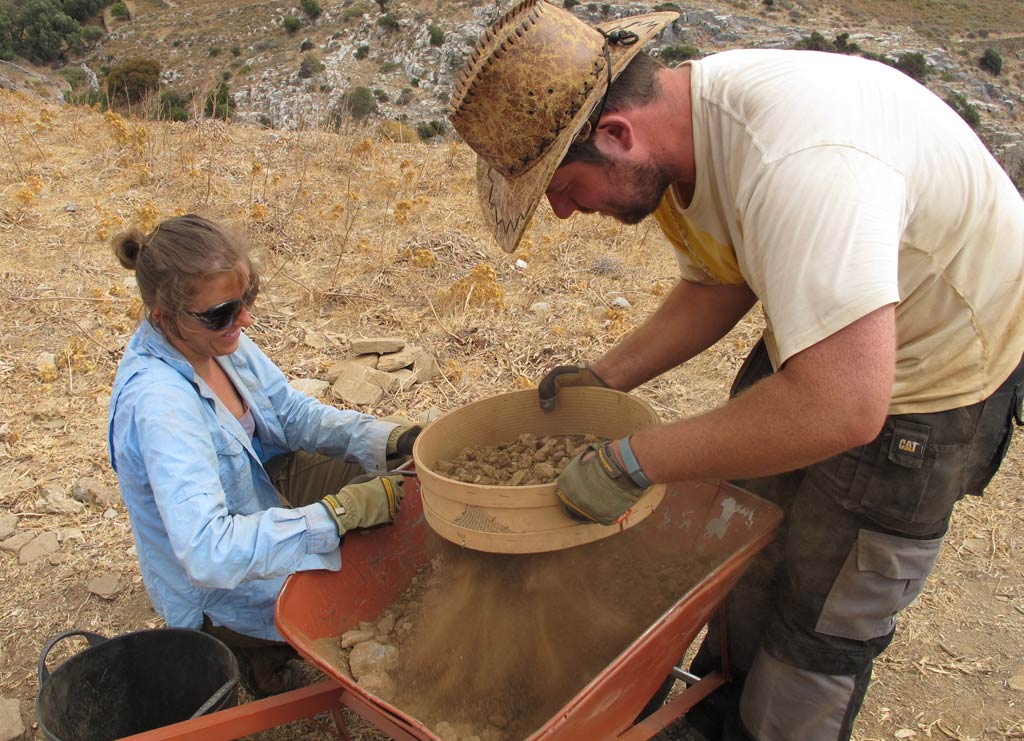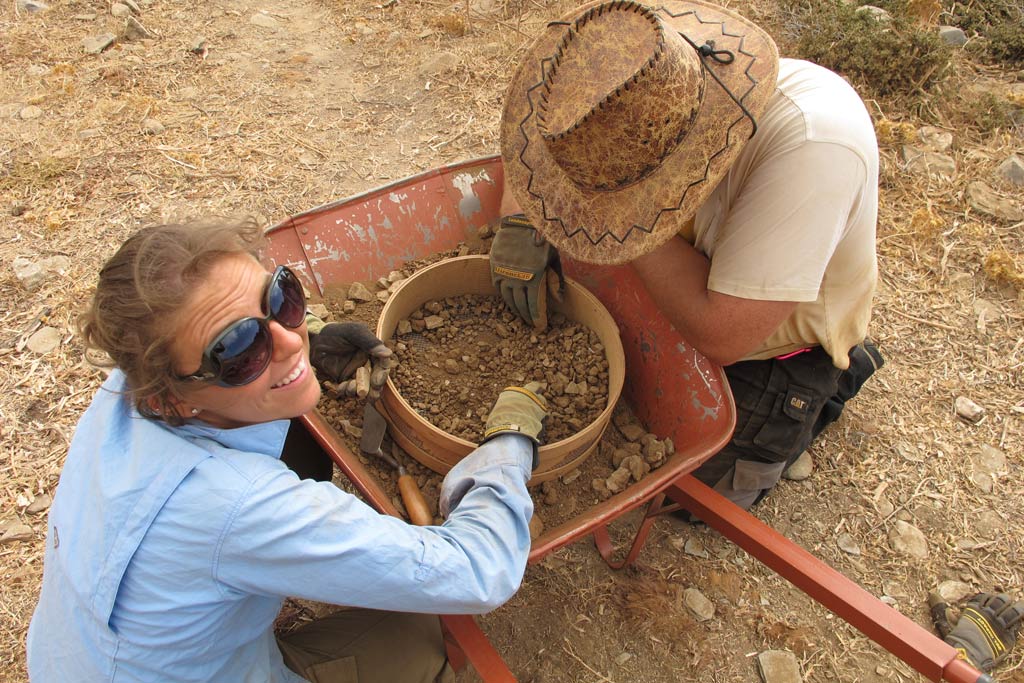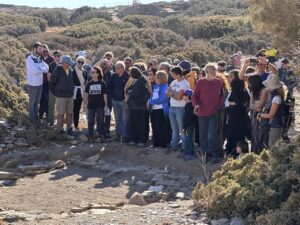
by Irma Havlicek
Powerhouse Museum Web Producer
When the archaeologists have excavated down past any topsoil or backfill (soil and stone material which had been placed there to protect the trench if it had been previously excavated), and reached what they consider potentially archaeologically significant layers of earth, they must begin dry sieving the soil at that layer to ensure that no artefacts or artefact pieces of significance are missed.
The photo at right shows several important tools of archaeology: sieve, wheelbarrow, trowel (in Jane’s hand), pick (partly obscured, being used by Kate Boyd [wearing aqua top], work gloves, brush, dustpan (green, at far left) and buckets for carrying soil, rocks and plant debris away).
They break up and crumble small pieces of dried earth until it is dust, and sieve it repeatedly so the dust filters through the sieve into the wheelbarrow below. Then they look through the debris that remains in the sieve and collect anything of archaeological significance, such as fragments of ceramics, metal, slag or small animal bones, which would be bagged, the bag clearly labelled with identification information, and sent to the Andros Museum in Chora that afternoon to be washed, sorted and analysed by Stavros Paspalas, Beatrice McLoughlin and their team working there. These pictures show the process of sieving at excavation area 3, of which Hugh Thomas (wearing the flash hat) is trench supervisor. (A gust of wind blew the hat off his head and nearly off the cliff in the first week…. but that’s another story.)





2 thoughts on “Archaeological sieving”
This post makes me wonder do archaeologists like gardening when they are off duty or do they get enough playing in the dirt at work?
You know, I’m not sure. I’ll have to ask them. My guess would be that, between excavations around the world (and just a little partying at the end of a hard week), and writing and research, they don’t get much time for gardening.